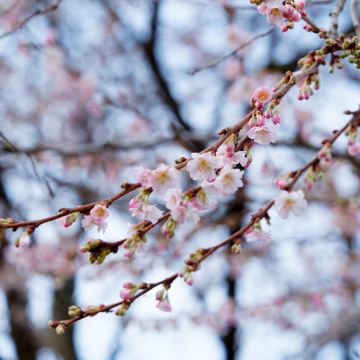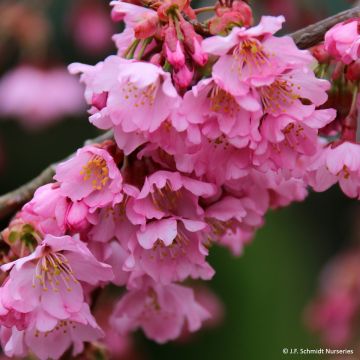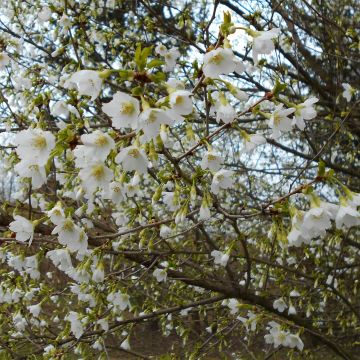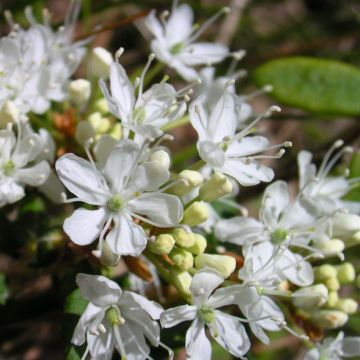

Prunus Umineko - Cherry


Prunus Umineko - Cherry
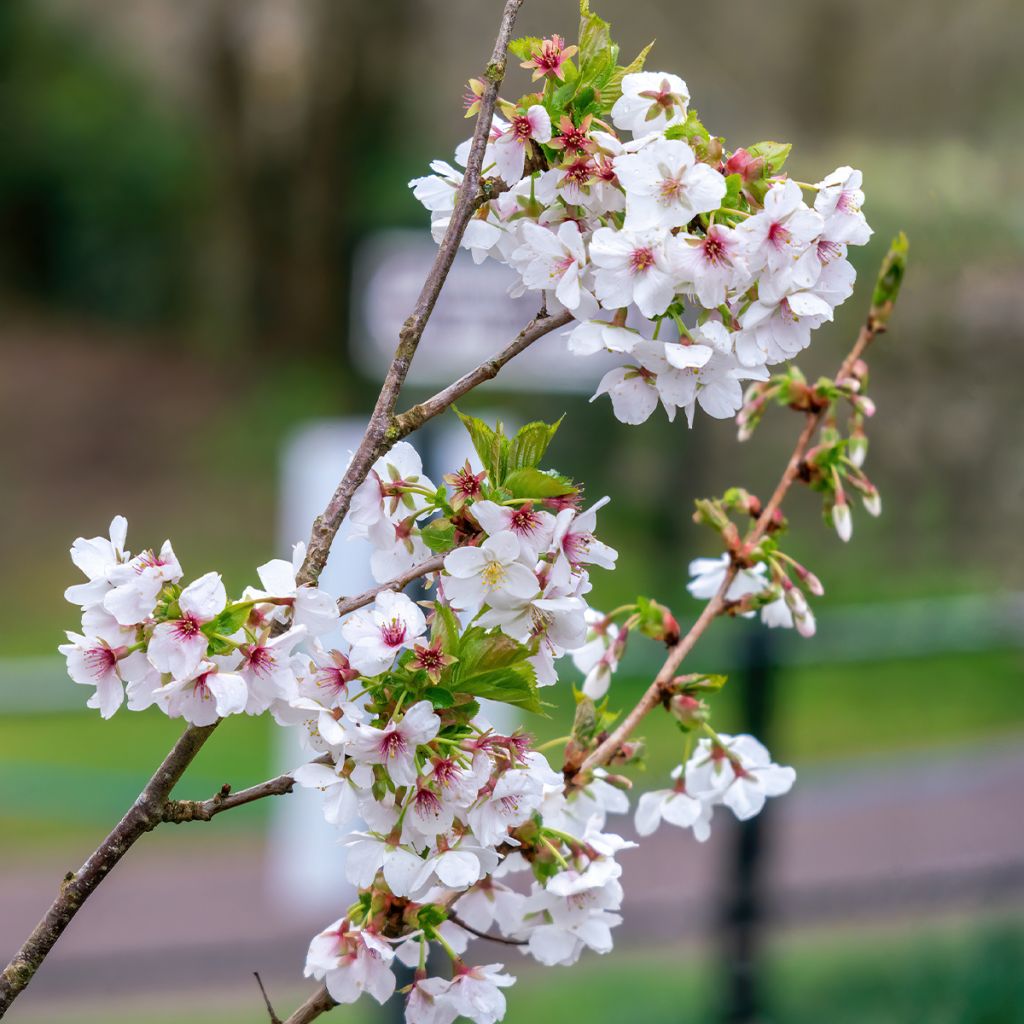

Prunus Umineko - Cherry


Prunus Umineko - Cherry


Prunus Umineko - Cherry
Prunus Umineko - Cherry
Prunus incisa x serrulata Umineko
Cherry
Special offer!
Receive a €20 voucher for any order over €90 (excluding delivery costs, credit notes, and plastic-free options)!
1- Add your favorite plants to your cart.
2- Once you have reached €90, confirm your order (you can even choose the delivery date!).
3- As soon as your order is shipped, you will receive an email containing your voucher code, valid for 3 months (90 days).
Your voucher is unique and can only be used once, for any order with a minimum value of €20, excluding delivery costs.
Can be combined with other current offers, non-divisible and non-refundable.
Home or relay delivery (depending on size and destination)
Schedule delivery date,
and select date in basket
This plant carries a 24 months recovery warranty
More information
We guarantee the quality of our plants for a full growing cycle, and will replace at our expense any plant that fails to recover under normal climatic and planting conditions.

Would this plant suit my garden?
Set up your Plantfit profile →
Description
The Prunus 'Umineko' is a hybrid flowering cherry tree of English origin. It is a deciduous tree appreciated for its upright habit and abundant spring flowering in loose clusters of pure white single flowers enhanced by numerous bright golden stamens. Its reddish-toothed leaves emerge at the same time, creating a halo effect of pink on the entire tree before gradually turning dark green. In autumn, its foliage ignites into shades of orange to deep purple-red. Its elegant silhouette and small size make it an interesting choice for planting in isolation, in alignment, or in the back of borders, especially in gardens with limited space. Hardy and undemanding, this tree thrives in full sun in all normal, not too poor, well-drained, and moist soils.
It is a variety resulting from the cross-breeding between Prunus serrulata var. speciosa and Prunus incisa, from which it inherits its colorful autumn foliage. Prunus serrulata, belonging to the large family of Rosaceae, is a small tree with a dense crown and fine bark, native to Asia, specifically Japan, Korea, and China. It is also known as Japanese Cherry, Hill Cherry, Japanese Flowering Cherry, or Oriental Cherry. Prunus incisa, commonly called Dwarf Japanese Flowering Cherry, is a very hardy tree of modest size, belonging to the large family of Rosaceae. In its natural habitat, it is found on the slopes of Mount Fuji in Japan.
The English cultivar 'Umineko' is an exceptionally floriferous variety that blooms in clusters of pure white single flowers in spring and develops a columnar habit, slightly wider than 'Amanogawa'. Of medium growth, this tree will reach between 7 m (23 ft) in height and 4 m (13 ft 1 in) in spread. Flowering occurs in April depending on the region, at the same time that young tender green leaves tinged with red and copper emerge. Its numerous buds open into small flowers, with pure white petals and golden yellow stamens, along the branches. Gathered in small clusters of 2-3, they measure 2.5 cm (1 in) in diameter. After flowering, the 'Umineko' Prunus adorns itself with ovoid deciduous leaves, doubly toothed at the margin, measuring 4 to 5 cm (1.6 to 2 in) in length. They are dark green in summer and turn brilliant orange, then scarlet red, and finally scarlet violet in autumn.
This small tree with a strong personality will naturally find its place in isolation, in alignment if space allows, or at most in the back of borders, placed behind perennials or small bushes with staggered flowering. To adorn its base, you can plant, for example, silver basket, a small creeping clematis Clematis diversifolia Rooguchi, or forget-me-nots, discreet and charming, which will not overshadow its splendor. You could also consider planting a small pink clematis to brighten foliage in summer (Clematis Little Mermaid, Success Cady, Josephine).
Report an error about the product description
Prunus Umineko - Cherry in pictures






Plant habit
Flowering
Foliage
Botanical data
Prunus
incisa x serrulata
Umineko
Rosaceae
Cherry
Cultivar or hybrid
Other Prunus
View all →Planting and care
The Prunus 'Umineko' thrives in full sun in any fairly rich, moist to wet but well-drained, fertile soil without excess acidity. When planting, mix your soil with compost at a ratio of 50%. Dig a large planting hole. Be careful of late frosts that could damage the early flowering. Similarly, wind and rain significantly shorten the tree's flowering duration, damaging the flowers. Therefore, preferably place the prunus in a fairly sheltered location.
Planting period
Intended location
Care
This item has not been reviewed yet - be the first to leave a review about it.
Haven't found what you were looking for?
Hardiness is the lowest winter temperature a plant can endure without suffering serious damage or even dying. However, hardiness is affected by location (a sheltered area, such as a patio), protection (winter cover) and soil type (hardiness is improved by well-drained soil).

Photo Sharing Terms & Conditions
In order to encourage gardeners to interact and share their experiences, Promesse de fleurs offers various media enabling content to be uploaded onto its Site - in particular via the ‘Photo sharing’ module.
The User agrees to refrain from:
- Posting any content that is illegal, prejudicial, insulting, racist, inciteful to hatred, revisionist, contrary to public decency, that infringes on privacy or on the privacy rights of third parties, in particular the publicity rights of persons and goods, intellectual property rights, or the right to privacy.
- Submitting content on behalf of a third party;
- Impersonate the identity of a third party and/or publish any personal information about a third party;
In general, the User undertakes to refrain from any unethical behaviour.
All Content (in particular text, comments, files, images, photos, videos, creative works, etc.), which may be subject to property or intellectual property rights, image or other private rights, shall remain the property of the User, subject to the limited rights granted by the terms of the licence granted by Promesse de fleurs as stated below. Users are at liberty to publish or not to publish such Content on the Site, notably via the ‘Photo Sharing’ facility, and accept that this Content shall be made public and freely accessible, notably on the Internet.
Users further acknowledge, undertake to have ,and guarantee that they hold all necessary rights and permissions to publish such material on the Site, in particular with regard to the legislation in force pertaining to any privacy, property, intellectual property, image, or contractual rights, or rights of any other nature. By publishing such Content on the Site, Users acknowledge accepting full liability as publishers of the Content within the meaning of the law, and grant Promesse de fleurs, free of charge, an inclusive, worldwide licence for the said Content for the entire duration of its publication, including all reproduction, representation, up/downloading, displaying, performing, transmission, and storage rights.
Users also grant permission for their name to be linked to the Content and accept that this link may not always be made available.
By engaging in posting material, Users consent to their Content becoming automatically accessible on the Internet, in particular on other sites and/or blogs and/or web pages of the Promesse de fleurs site, including in particular social pages and the Promesse de fleurs catalogue.
Users may secure the removal of entrusted content free of charge by issuing a simple request via our contact form.
The flowering period indicated on our website applies to countries and regions located in USDA zone 8 (France, the United Kingdom, Ireland, the Netherlands, etc.)
It will vary according to where you live:
- In zones 9 to 10 (Italy, Spain, Greece, etc.), flowering will occur about 2 to 4 weeks earlier.
- In zones 6 to 7 (Germany, Poland, Slovenia, and lower mountainous regions), flowering will be delayed by 2 to 3 weeks.
- In zone 5 (Central Europe, Scandinavia), blooming will be delayed by 3 to 5 weeks.
In temperate climates, pruning of spring-flowering shrubs (forsythia, spireas, etc.) should be done just after flowering.
Pruning of summer-flowering shrubs (Indian Lilac, Perovskia, etc.) can be done in winter or spring.
In cold regions as well as with frost-sensitive plants, avoid pruning too early when severe frosts may still occur.
The planting period indicated on our website applies to countries and regions located in USDA zone 8 (France, United Kingdom, Ireland, Netherlands).
It will vary according to where you live:
- In Mediterranean zones (Marseille, Madrid, Milan, etc.), autumn and winter are the best planting periods.
- In continental zones (Strasbourg, Munich, Vienna, etc.), delay planting by 2 to 3 weeks in spring and bring it forward by 2 to 4 weeks in autumn.
- In mountainous regions (the Alps, Pyrenees, Carpathians, etc.), it is best to plant in late spring (May-June) or late summer (August-September).
The harvesting period indicated on our website applies to countries and regions in USDA zone 8 (France, England, Ireland, the Netherlands).
In colder areas (Scandinavia, Poland, Austria...) fruit and vegetable harvests are likely to be delayed by 3-4 weeks.
In warmer areas (Italy, Spain, Greece, etc.), harvesting will probably take place earlier, depending on weather conditions.
The sowing periods indicated on our website apply to countries and regions within USDA Zone 8 (France, UK, Ireland, Netherlands).
In colder areas (Scandinavia, Poland, Austria...), delay any outdoor sowing by 3-4 weeks, or sow under glass.
In warmer climes (Italy, Spain, Greece, etc.), bring outdoor sowing forward by a few weeks.































